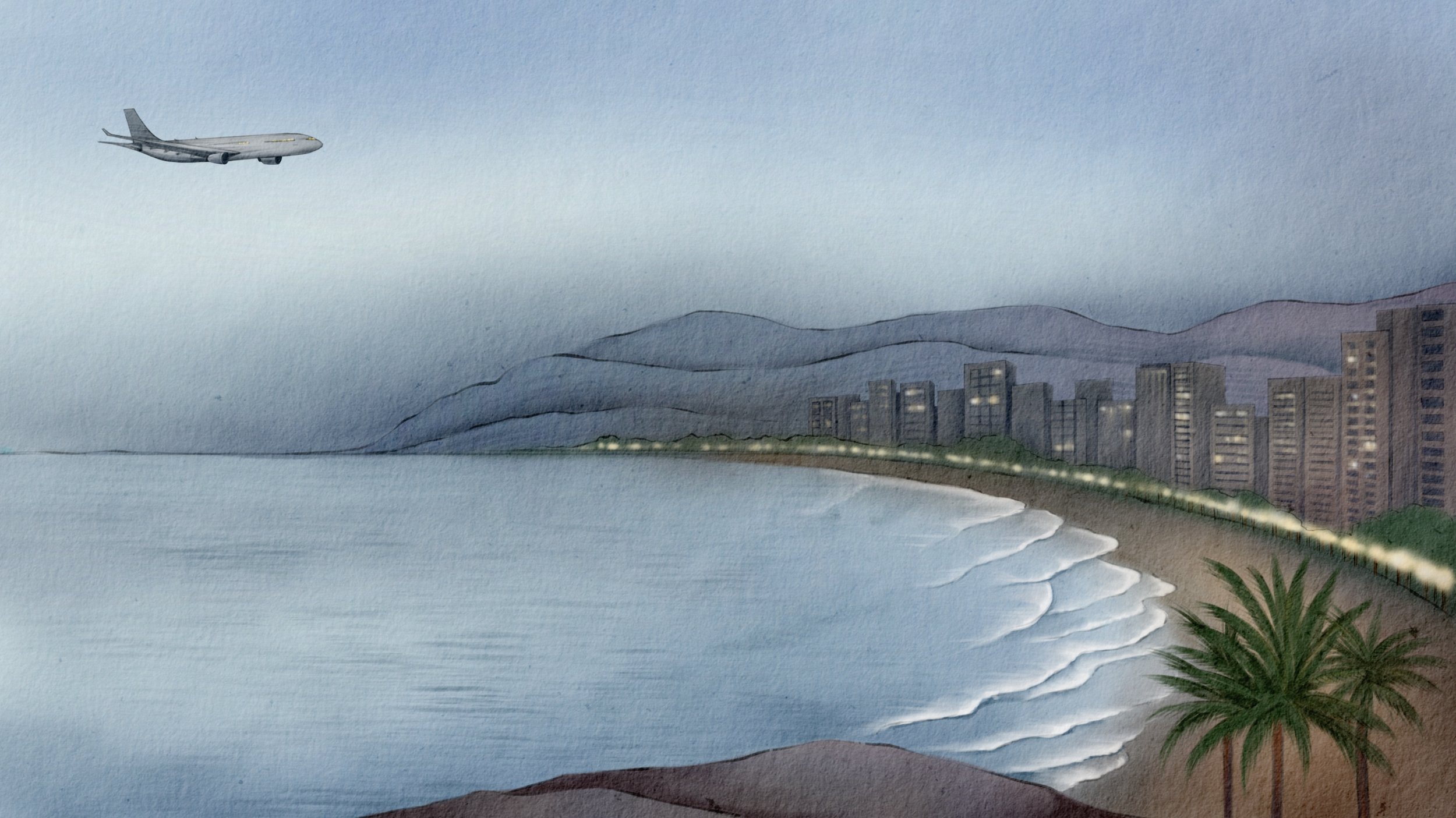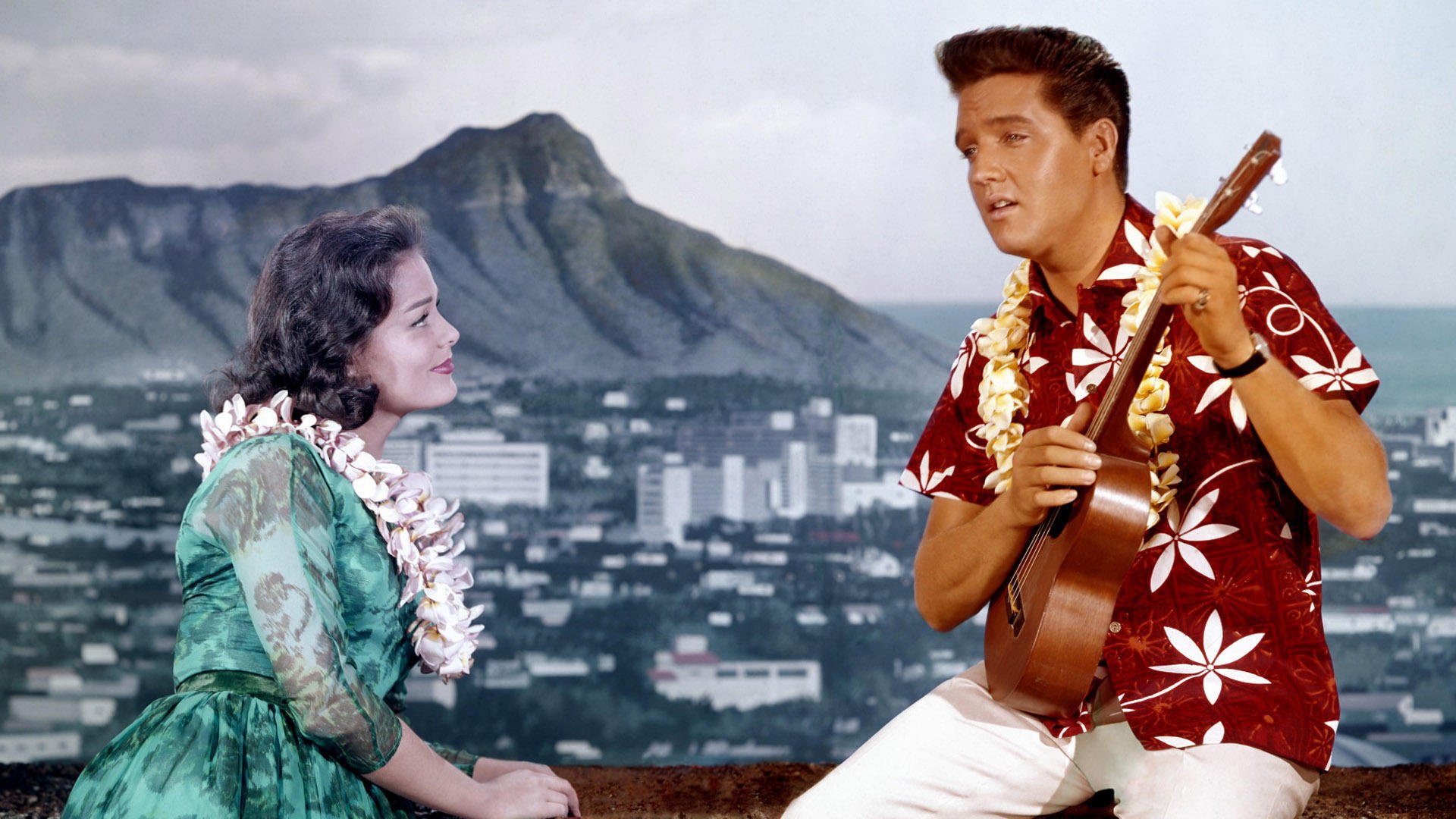— The story goes that half the way on a long-haul flight, a faulty plane is forced to land off-course, leaving a few passengers from around the world stuck in a far off place. Over a few days in a small hotel, those passengers connect - and then decide - to stay and start a life and business together during what becomes a historic time in that new land. That’s So Far Bound - a scripted, live-action, TV series. We’re here to raise funds and find people to make the first episodes. Please browse the site for details on the series and its goals and, if you dig it, please consider supporting the efforts to make it. Thank you!
big, dumb plane. WHOLE new world.
Before we get into it, let’s do a quick introduction. I’m Evan Sandoval; I’d be an actor and writer on So Far Bound. I’ve been in and around film and TV for a decade, doing all kinds of work on productions larger and smaller. All along, I’ve written scripts across genres and self-studied in filmmaking, and for now, it’s me writing in the first (and third) person throughout the website. Anyway, I really appreciate that you’re here checking out the project. Please read on for the top ten things to know about Bound …
the top ten
1 It’s old TV for the new age.
— First things first, what are the basic forms of the project? It’s a narrative, fiction series, set in the present day, with episodes that would run between 30 to 40 minutes. It’s outlined as having a few more episodes per season, similar to times past, in which there is room for longer story arcs but also room for one-off, “adventures of the week” and recurring specials. Finally, the plan is to build an ongoing series that plays yearly and on schedule - just like the good ‘ol days.
+ Scripted
+ Live-Action
+ Half-Hour
2 There’s stories in the name.
Bound (for) adventure.
— The first meaning in the So Far Bound title is the idea of going somewhere or toward some thing. The inciting action for the entire story is that the characters all decided to catch a flight to someplace new to them, and that action of traveling shapes an overall series theme of expedition. Over time, we’ll see the characters discover, explore, settle and then advance or fall in their new world.
Bound (to) others.
— A second meaning is the idea of being tied to or connected with others. Once the characters find themselves stranded, they’ll each make way to the same hotel, and from there, we add a second shape to the story: the evolution of a found family. Within the the hotel (and the city), the strangers will cross paths, attach, and soon, they’ll bind and grow in harmony and in conflict with each other.
3 It’s on-location, baby.
* The photo is for reference only; the final location is tbd.
— The story is written in a fictional setting, called Lina (lee-nuh). It’s seen as a smaller city, whose airport might struggle with the large, grounded flight. It has great features in both the urban and the natural, with varied architecture and hills and sea. It’s pretty, but it’s written with a bit of edge. … The goal for production is to film in a location that is unique and authentic to the story. We’d build our main sets within the city (or partner with an existing hotel), plus also make good use of the selected city or area by filming in surrounding places throughout the episodes. Finally, we’d tailor the story to the cultural qualities of the location.
4 It’s got the new, cool spots.
* The drawing is an early sketch of the fictional street layout.
— After the flight makes its emergency landing, a few passengers are shepherded to a hotel that has seen its better days: The Wild Horse. It’s pictured in a central location; it’s quaint and eclectic and with a few issues. A big, weathered sign should mark it out front. After a few days in waiting, once the guests decide to stay longer, the hotel will act as their home for the near future. … Across the street stands The Lime Tree, a bar/cafe that will become a de facto kitchen and living room for the passengers. It’s envisioned as compact, but with enough room to boogie when the music’s on. At night, its tall, wide windows should light the street’s corner.
5 There’s one, big, happy family?
— Eh, maybe; maybe not. For Bound, we used the setup of a “large, international flight” as an opportunity to create characters of not just varied personalities, but also of varied backgrounds. For one, the banter between them should be great, and also, so should the tensions. By featuring people from different worlds who would together - but each in their own way - try to build a new life in a dynamic setting, the opportunities for both drama and hi-jinks are abundant. … The main cast (aka the flight passengers) would operate in a co-star manner - kinda like that one, hit show from the ‘90s. The main characters are:
“Devika”
“Mei Ling”
“Samirah”
“Valya”
“Al-Haj”
“Dwi”
“Jonathan”
“Gustavo”
6 Worlds collide!
— There’s the collision of the characters above, and furthermore, there’s the collision of the passengers with the people local to the place in which they land. To add depth to the setting and variety to the story, we’ve created a secondary ensemble of local characters to interact with the main players. There’s “Fernanda,” a former teacher in her ‘60s who’s come to take over The Wild Horse; there’s also “Jimmu,” a man in his 80s who tends bar as he pleases at The Lime Tree, plus more characters for the passengers to encounter. … L’Homme de Rio (pictured) is a fine example of a “worlds collide” storyline. In the movie, a couple from Paris winds up in Rio de Janeiro, effecting the new environment while also being effected by it.
NOTE — Numbers 6, 7 & 8 reference projects from the 1950s and ‘60s. We ended up there through my mother. When I was a kid in the ‘90s, we had one TV and when it was her turn I had to sit through whatever was on Turner Classic Movies. The first (non-kid) movie I remember making it through was Some Like It Hot (1959). It’s funny; we stay who we were as kids or teenagers, as far the things we like. So, my affinity for that time in movies and TV endures and it’s a few projects from that era that I’ve always thought of as inspirations for So Far Bound’s style. — Back to the list:
7 We like to have fun, first.
Pictured: Some Like It Hot, 1959.
— In the 1950s, the director Billy Wilder went on an all-time hot streak starting with Sunset Boulevard in 1950 and ending with The Apartment in 1960. You’d call either of those films a “comedy” first, with their livelier characters and more farcical actions, but each still gave room for sincerity, sensuality and, at times, darkness. Even Some Like It Hot, the silliest movie of the streak, holds grace through the delicate, but still rowdy, performance by Marilyn Monroe. … In Bound, we also want to have a good time first, showing characters (and thus tone) in a sillier manner to start; then, the test is how to deftly slide them into moments of quiet or drama, or mania or love, when it’s wanted.
8 We got style.
Pictured: Blue Hawaii, 1961.
— Did you know about the “Elvis Goes Places” sub-genre? In a dozen movies, Presley went off to some place, sang songs and got the girl. The movies, god bless ‘em, aren’t good, but going to cool locations in technicolor ain’t a bad way to spend some time. Another thing I love about them is that they’re so kitschy but in the best ways. Take the sets in Blue Hawaii or Fun in Acapulco; they’re “chic” on one hand and like a Margaritaville on the other. Either way, you like to be up in there. … Bound will aim for a similar feel to its settings. It doesn’t mean we won’t get into the grime of a place, but overall, we’ll go for a little style with both person (wardrobe) and place (set design).
NOTE — Another, cool thing about that pocket of time is that filmmakers were becoming more empowered, stylistically. And so, films and series started to be more “unconventional” but still within the sandbox of more “traditional” pictures. The results are projects that are both old and new wave at once. It’s a nice ideal for Bound, as we want to pay homage to past loves but still try new things in craft and in production.
9 We’re going for a little more.
— The goal today is to make eight episodes, or Part 1 of the series, and to create about 60-70 roles/jobs across cast and crew. That choice to go for more than just one episode derives from both story and team. For story, it’s about greater proof of concept, allowing time to better set up the structures of the larger story and to flesh out the variety of tones, notes and characters. For team, simply put, eight episodes is a greater and more consistent work opportunity to be had by more people. … And why 8, specifically? The scripts are written in sets of four, with a broad theme for each set. The eight episodes (or two sets) would conclude Part 1 of the currently 10-part story.
Set A — “First Days”
Episodes 1-4. The chaos and excitement of the days after landing, with the characters exploring while still in waiting.
Set B — “On Holiday”
Episodes 5-8. A boom period of characters further learning each other and the place they’re in, before ideas of settling.
* A full season as outlined today would mean four sets, equaling 16 episodes.
0 It all started before it started.
— To end, let’s go back to the beginning, where the basis for Bound was formed. In my early 20s, I was fortunate to spend some time traveling abroad. There were short trips, with nights in hostels where a few of us strangers would become quick friends and have adventures both good and bad. But I also had the opportunity to spend extended time in both Brasil and Spain, which offered insight into what it might be like to “re-settle” in a different world from mine. At the time I was traveling, I wasn’t thinking on those terms, nor was I even considering a career in film or TV. — But then I did, and when I got into writing, those travel experiences were there as a spark and a foundation on which to build up the So Far Bound story.
Pictured: A friend and I, abroad in the early 2010s.
… Listen, there’s a lot of TV (and Tik Toks) out there and we know it’ll be tough to break through if Bound were to get made. On our end, we’ll work to make something that’s fun and has a few ideas, and we’ll use our stature (or lack thereof) as a power to try and to be new things. And with that attitude and opportunity in tow, I believe Bound can be something that both stands up and then stands out, in some way. — Thanks so much for checking us out. We appreciate any support. Cheers!















